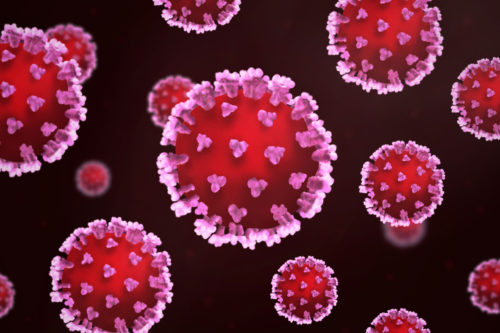In 1945, when Alexander Fleming, the father of penicillin, received the Nobel Prize for Science, he noted that microbes evolve and would soon develop resistance to available antibiotics. He warned us to be extremely vigilant as microbes could be our doom. He was prophetic.
The options for treating evil microbes are going down and their number and severity are going up. We unwittingly consume a great deal of antibiotics not only from prescriptions but, increasingly, from what we eat, too—fruit, beef, chicken and pork. As a result, most antibiotics have no therapeutic value against evolving super bugs, increasing the rate of death from infectious diseases. Even before the appearance of COVID-19, Staphylococcus aureus, or MRSA, has been killing 700,000 people per year, and we have nothing to treat the carbapenem-resistant Enterobacteriaceae. The forecast is that microbial infections will be the cause of death for 10 million people per year worldwide.
Our bodies are home to trillions of microbes and most of them are surprisingly good for us. Only a tiny number of them make us ill. But they are, nonetheless, the cause of a third of all deaths in the world. Microbes make up about 10 percent of our diet and break down what we eat so it can be digested from the 20 or so digestive enzymes permanently residing in our gut. What if we could enlist the good microbes to fight the evil microbes for us?
While we are spending time sheltering at home, my wife and I are catching up on movies. We just watched “War of the Worlds” and guess what saved us? A virus! This is not only true in movies, but could be our savior in real life as well. No doubt you are also watching “Outbreak,” “World War Z,” “Black Death,” “The Andromeda Strain,” “The Last Man on Earth” and “Contagion.”
Why is it that we preach that “prevention is better than a cure” to our children but don’t practice what we preach? Our country could have been so much better off today if we had not disbanded the Medical and Biodefense Preparedness office, reduced the budget for the Centers for Disease Control and Prevention and ignored the warnings from multiple intelligent sources.
But because we made these errors, there was not enough work being done to find out how microbes affect us. There is so much more to learn and so little time to get it done. While it is hard to wrap our minds around a microscopic organism causing the demise of mankind, it has that potential. Just like it only takes one seed to produce a forest, or one candle to light every other candle in the world, it takes only one infected person to infect the entire planet.
Here’s what we know about microbes:
- Microbes consist of bacteria (think: bubonic plague, cholera and pneumonia), fungi (mushrooms, yeasts, molds and athlete’s foot), viruses (coronavirus, HIV, SARS, EBOLA, smallpox, the common cold and flu, measles, mumps, chicken pox, hepatitis, herpes and polio) and protists (amoebas, algae, protozoa, archaea and slime molds). If you made a pile of all the microbes on earth, it would be greater than all the animals. There are more microbes in our bodies than cells.
- Viruses are tiny micro-organisms and mostly invisible. If you blow one up (as we have been doing with coronavirus) to the size of a tennis ball, the human from which it was extracted would be 500 miles tall.
- Microbes even live in the ocean. A quart of sea water contains 100 billion viruses.
- Of the hundreds of thousands of viruses identified so far, only 263 affect humans either for good or evil.
- Microbes produce the gas that occasionally escapes from our rectum as they convert what we eat—particularly beans—to methane.
- Passionate kissing accounts for the transfer of one billion bacteria from mouth to mouth.
- The varicella-zoster virus that causes chicken pox can be inactive for 50 years before springing back as shingles.
- Viruses cannot propel themselves and have no means of locomotion. We have to go out and get them from surfaces—door handles, money, handshakes—and by inhaling it. But once they get into a cell, they explode with activity.
- About 40,000 species of microbes live in and on us (on our skin, in our nostrils and lungs, in our mouth and stomach). You can soak yourself in alcohol and wash your hands for an hour and never rid yourself of all of them. But you don’t want to; again, most of them are beneficial.
- Have you even had an E. coli infestation? Without treatment, they can reproduce 25 times per day.
- While minorities are at greater risk because they have suboptimal health care, COVID-19 is an equal opportunity infector, although infections in children are relatively uncommon.
So, how is social isolation working for you? The average person puts their hands to their face 16 times per hour, or about 200 times per day! An infected doorknob can infect everyone in the building in less than a day. The virus can infect everyone who touches the same dollar bill over a two-week period.
Who knows what is out there waiting for us? Viruses can bide their time until they get ready to wreak havoc. What affect will global warming have on new viruses that have been dormant for millions of years with the melting of the glaciers or the opening up of new farmlands in ancient rainforests?
—B. Waine Kong, Ph.D.






